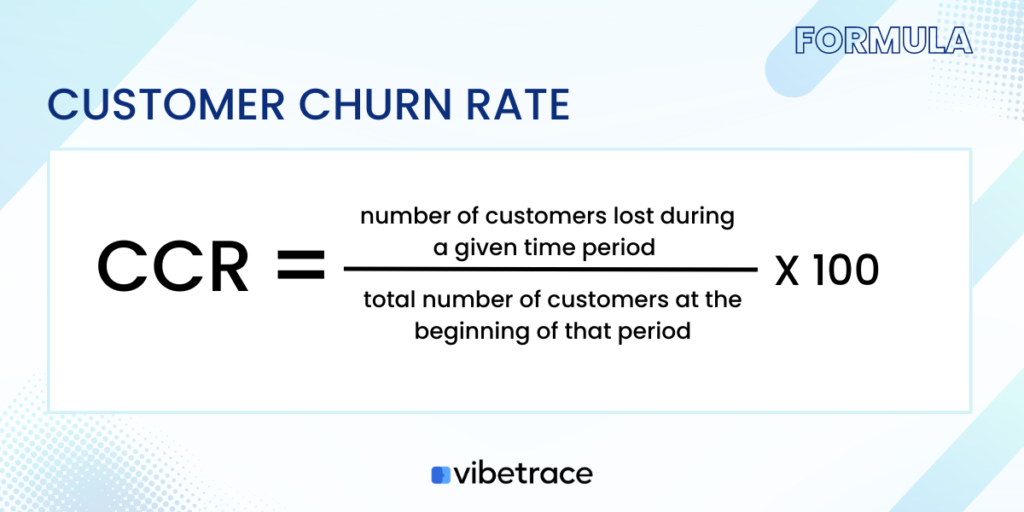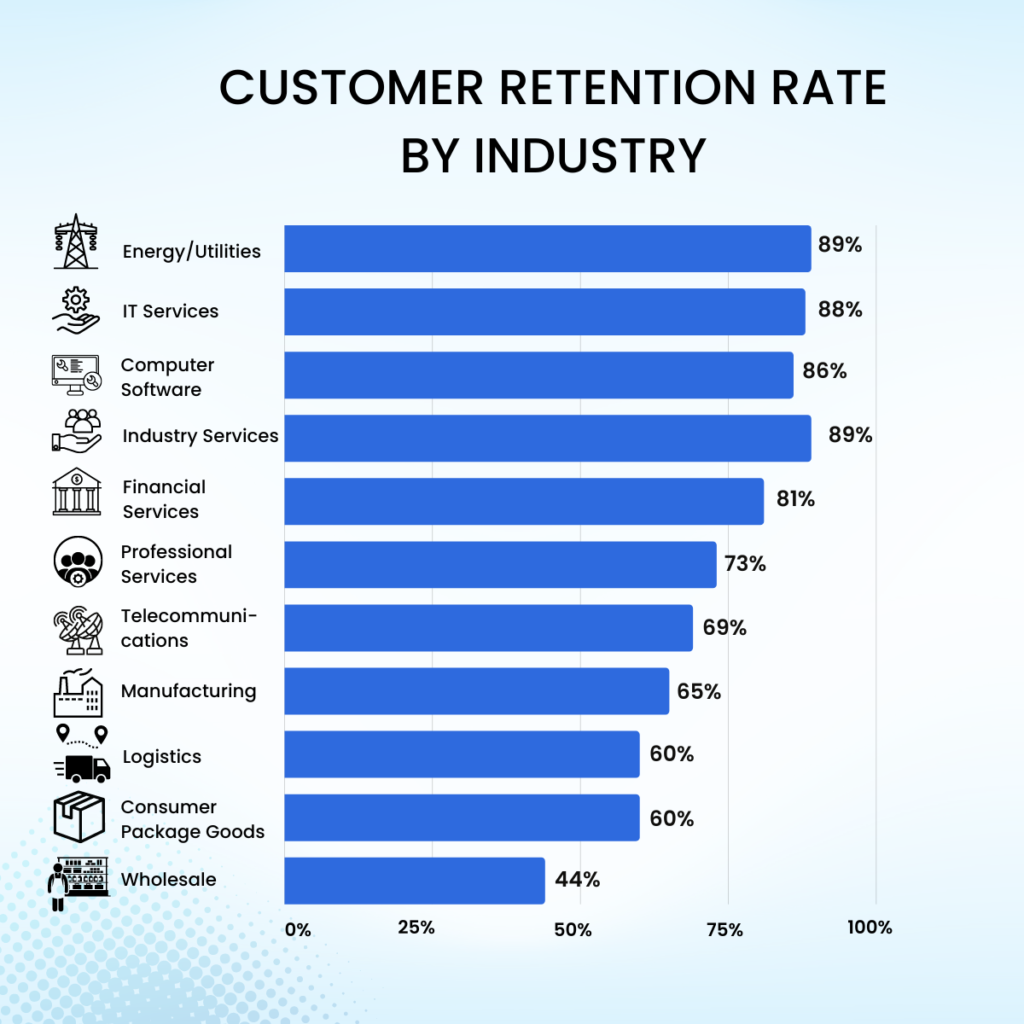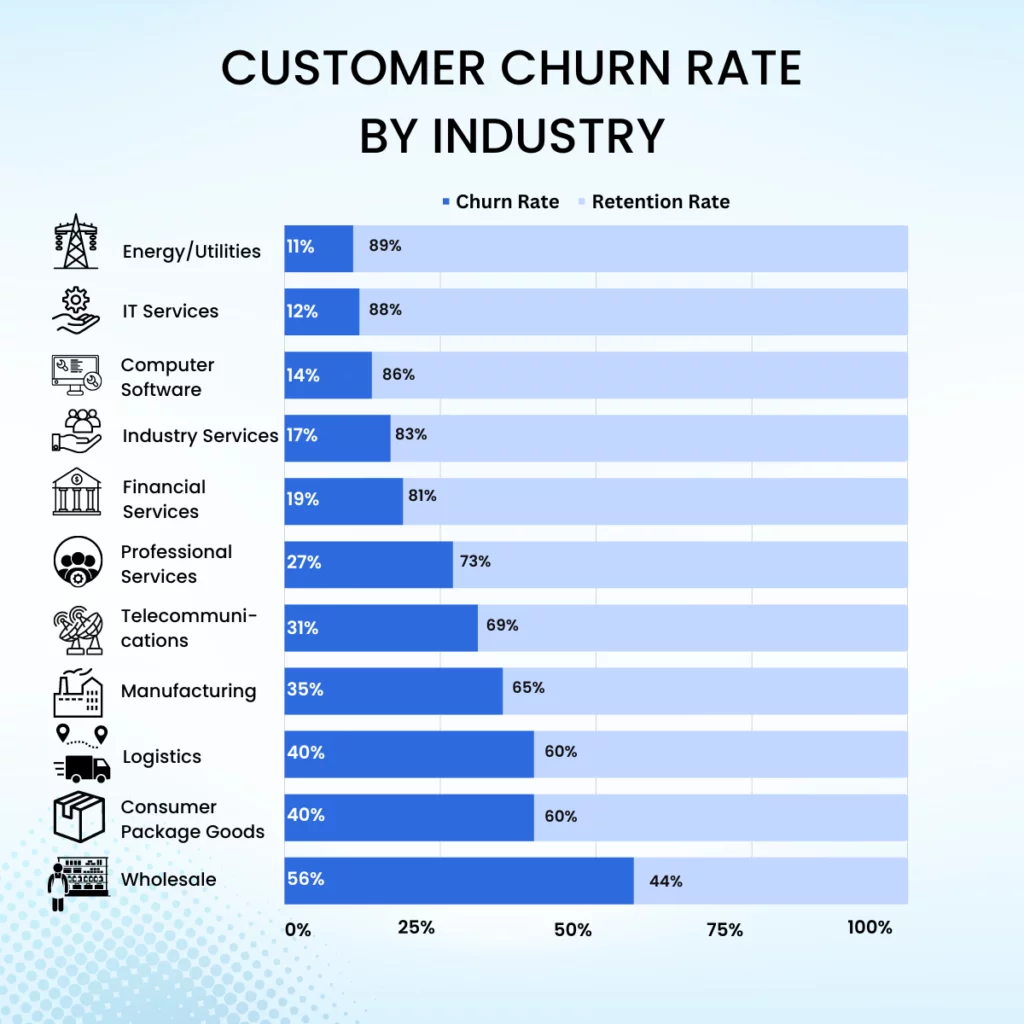Customer Churn Rate, also known as attrition rate, is a crucial metric that provides insights into when customers stop purchasing from a business.
It is a natural cycle for your business to gain and lose customers, but the key challenge is ensuring that the business gains more customers than it loses.
So, tracking customer churn rate can help you determine whether your business is retaining most of its customers or losing them. This is important because customer retention is less expensive and easier than acquiring new customers.
If your business experiences a high customer churn rate, it could indicate a problem with your product, service, or marketing efforts. As a result, this could turn into big drawbacks for your business with regard to attaining growth.
Analyzing the metric could also be an excellent opportunity for your business to improve marketing strategies, retain customers, and develop products or services that are appealing to customers.
What is Customer Churn Rate?
Definition of Customer Churn Rate
Customer churn rate is a metric use to measure the number of customers who stop using their product or service within a specific period.
Furthermore, customer churn rate is an essential metric for businesses, as it provides insights into customer retention and satisfaction. Also, it indicates the rate at which customers are leaving the business and no longer generating revenue.
Analyzing this indicator may appear difficult, but the results which show high customer churn rates can be costly for any business, as it requires spending more money and effort to gain new customers to replace those who have left.
Customer Churn Rate Formula
The customer churn rate formula can be expressed as follows:

For instance, if your business starts the month with 1000 customers and loses 50 customers by the end of the month, the customer churn rate for that month would be:
Customer churn rate = (50 / 1000) x 100 = 5%
Alternatively, the customer churn rate can be computed using the customer retention rate. It is done by simply subtracting the customer retention rate from 100.
Customer Churn Rate Benchmarks by Industry
Customer churn rate can vary depending on your business strategies although it may also vary by industry. For an easier way to analyze this metric, using the retention rate could be the best option so you get to have a bigger understanding of your customers’ behavior through both metrics.
The percentage of existing customers who remain as your customers after a specific period is referred to as the customer retention rate.
Here’s the data on Customer Retention Rate according to CustomerGauge:

Simply decrease the retention rate from 100 to compute churn from retention:

| Industry | Customer churn rates |
| Energy/Utilities | 11% |
| IT Services | 12% |
| Computer Software | 14% |
| Industry Services | 17% |
| Financial Services | 19% |
| Professional Services | 27% |
| Telecommunications | 31% |
| Manufacturing | 35% |
| Logistics | 40% |
| Consumer Package Goods | 40% |
| Wholesale | 56% |
The data is sourced from a blog post on CustomerGauge that presents the average customer churn rates by industry. The table lists ten different industries and their corresponding churn rates as a percentage.
The data shows that the Energy/Utilities industry has the lowest churn rate at 11%, followed by IT Services at 12%, and Compute Software at 14%. On the other end of the spectrum, Wholesale has the highest churn rate at 56%, followed by Consumer Package Goods and Logistics at 40% each.
The data provides valuable insights for businesses in these industries to understand their customer retention rates and benchmark themselves against industry averages.
Want to be up to date with Marketing?
Subscribe to our Retail CX newsletter!

Stay connected with what’s really important to optimize your digital revenues.
By clicking the button, you accept our Terms & Conditions. Also you will need to confirm your email address.
By acknowledging these data, you’ll have a better understanding of the common averages, and the next time you see your churn rate, you’ll be able to use the data to determine how well your business is doing.
How to track Customer Churn Rate?
Tracking customer churn rate can help you identify areas that need improvement in your product, service, or marketing efforts to increase customer retention and reduce churn rate. In fact, this allows you to make informed decisions to drive growth and success.
There are several tools available to track customer churn rate, depending on the size and type of your business. Here are some popular tools that you can find online:
User Analytics Tool: User analytics tools like Mixpanel helps you track user engagement and behavior across multiple channels. It provides a variety of churn metrics, such as user retention rate and churned user analysis. It also provides insights into customer behavior and tools for identifying at-risk customers.
Google Analytics: Google Analytics is a free tool that helps you track website and app usage. It can be used to track customer behavior and identify areas where customers may be dropping off. You may track user engagement and retention over time by creating custom events.
Customer Success Platforms: There are several customer success platforms available, such as Gainsight, Totango, and ChurnZero. These platforms offer a range of tools to track customer behavior, identify at-risk customers, and take proactive measures to reduce churn.
Excel or Google Sheets: If your business has limited budgets, Excel or Google Sheets can be used to track customer churn rate. By setting up a simple spreadsheet with customer data, you can calculate customer churn rate and track it over time.
These tools are just a few of the many tools you can use to better understand customer behavior, identify reasons for churn, and take proactive measures to improve retention and reduce churn.
How often should you check Customer Churn Rate?
The frequency with which you must check your customer churn rate varies based on the industry and the type of product or service you offer in the market. However, as a general rule, it is advised that you track your customer turnover rate on a regular basis, preferably monthly or quarterly.
Additionally, monitoring your customer churn rate on a regular basis can help you spot patterns and trends over time, providing useful insights into your customer behavior and preferences.
You can also take appropriate action to boost customer retention and avoid future churn by regularly monitoring the churn rate.
Although you must keep in mind that simply tracking customer churn rate without taking action to improve it will not yield any results.
Customer Churn Rate Calculator
Do you want to calculate your customer churn rate? Use our simple calculator below.
Simple Customer Churn Rate Calculator
Total number of customers:
Number of lost customers:
Customer Churn Rate:
= ?
Important Things about Customer Churn Rate
Customer churn rate is a crucial metric for any business, as it provides valuable insights into the health of its customer base. Here are a few important things you need to note in mind about customer churn rate:
Measures customer attrition: customer churn rate is the percentage of customers who stop using a product or service over a specified period of time. This metric can help you understand how many customers you are losing and why.
Increases the Customer Acquisition Cost: Acquiring each customer involves a cost, and an increase in customer churn rate can lead to higher expenses in acquiring new customers. This reinforces the idea that the lower the customer retention rate, the more money your business will need to spend on acquiring new customers.
Varies by industry: The customer churn rate can vary widely depending on the industry and the nature of the product or service. For instance, subscription-based businesses tend to have higher customer churn rates compared to those that offer one-time purchases.
High impact on revenue: A high customer churn rate can have a significant impact on your business’ revenue, as losing customers means losing potential sales and recurring revenue.
Can be reduced with proper strategy: You can take steps to reduce customer churn rate by improving customer experience, addressing customer complaints and feedback, and offering better value and incentives to retain customers.
Metrics related to Customer Churn Rate
Here are some metrics related to customer churn rate:
Average Order Value
Vibetrace is an email marketing automation platform that can help you reduce churn rate by enabling you to engage with your customers in a more personalized and targeted manner.
Vibetrace allows you to personally segment your customers based on your customer attributes such as behavior, interests, and preferences.
You can easily create personalized targeted emails that are relevant to each customer that will help you engage and reduce.

